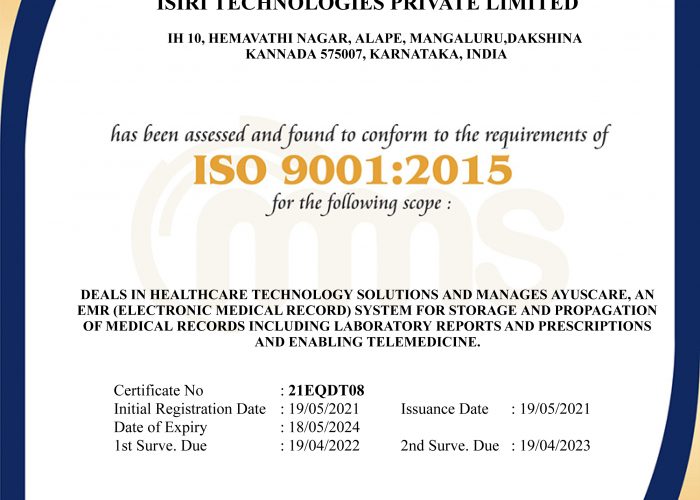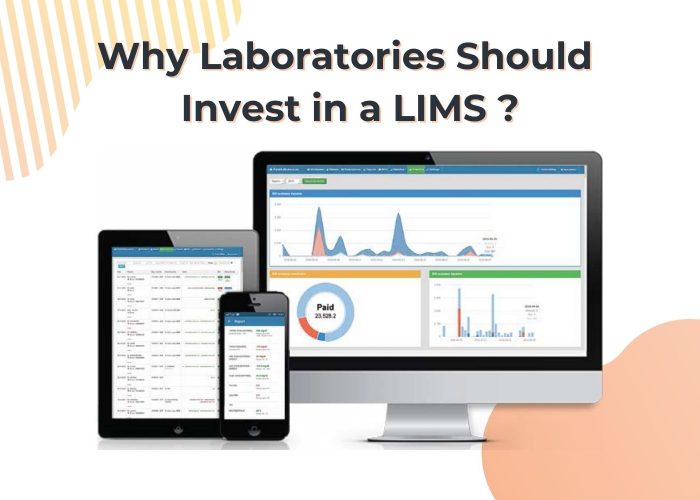AyusCare Team made a survey that asks whether the diagnostic instruments have been interfaced with the LIMS, When reviewing the results, it turns out that a large percentage of LIMS implementations have not interfaced with the diagnostic instruments to the software.
Why don’t you? The answers vary, but they include:
- We plan to in the next phase of the LIMS implementation.
- We had to get the management reports done first.
- We felt it cost too much to interface the instruments.
- We felt that cutting and pasting was good enough
All of these explanations for not communicating with instruments may seem rational to the holders of LIMS, but there are compelling reasons to attach any instrument in your lab to your LIMS that you may have. However, before we get too far into it, let’s discuss the kinds of devices that can be interfaced to the LIMS.

Types Of Instruments That Can Be Interfaced To AyusLab LIMS
Instruments to be interfaced to a LIMS fall into three major categories:
Simple instruments: Such styles of instruments are capable of outputting a result but no specific metadata (sampleID, testID, test parameters) to enable unassisted interfacing. Interfacing approaches involve allowing data transfer from the LIMS data entry window or using an intermediate application software package where the necessary information can be correlated with the result. Ironically, these “simple instruments” are sometimes the most difficult interfaces to the LIMS.
Uni-directional instruments: These types of instruments are capable of producing a data document and a results folder, but do not have the facilities to import details. The metadata needed to allow unassisted access will be available in the output documents. Interfacing these instruments achieved by the LIMS or interfacing software, which picks up the file at the position and then parses and enters the information/results in the LIMS. Additionally, most instrument interface solutions may offer a wide range of drivers to connect certain styles of instruments, and some manufacturers will even create new drivers when required.
Bi-directional instruments: Such types of instruments are capable of outputting data reports and results from records, and have an Application Programming Interface (API) to enable the import of data, details, protocols, worklists, commands/calls, etc. Such advanced instrument devices, like many information chromatography systems and robotic systems, were programmatically interfaced with the AyusLab LIMS.
Why Interface Your Diagnostic Instruments To LIMS
There are a number of reasons why it is important to integrate the diagnostic instruments with AyusLab LIMS. Some of the most common ones are discussed below.
INCREASE PRODUCTIVITY/EFFECTIVENESS
One of the best reasons to connect the instruments to your LIMS is to increase the productivity of the lab and the performance of the scientists it creates. Removing the manual processing of results, or even the cutting and pasting of data from the instrument to the LIMS saves a ton of time and effort.
Likewise, if you are using bi-directional interfacing, you will also remove the time necessary to enter the result, parameters, etc. into the instrument system. This can all be set up in your LIMS and passed automatically to the machine. Increased productivity and specimen efficiency were key objectives in all quality control and laboratories. That productivity (i.e. increasing the amount of time available for researchers) is a key goal of diagnostic laboratories.
INCREASE DATA QUALITY / DATA INTEGRITY
Another key reason to interface your instruments to your LIMS is the increase in the quality and integrity of your data. When eliminating the “human element” from the data transfer and output formula, a major error factor is eliminated.
Removing transcription errors can greatly improve the quality of your results. Information accuracy is a very important issue for laboratories that are under increased scrutiny of NABL approved laboratories. The collection and storage of information from the origin (i.e. instrument) to the data system (LIMS) is a major source of warning letters. You will resolve this problem by interfacing your instruments with AyusLab LIMS.
INCREASE USER SATISFACTION AND LIMS ADOPTION
One of the concerns that technicians frequently encounter in the lab when the LIMS was introduced is that there was not much in the LIMS that assisted them in their research. In reality, they will sometimes complain that LIMS has done more work for them and that they have “Hate LIMS.”. One of the easiest ways to increase LIMS satisfaction among technicians is to integrate lab instruments with LIMS.
By doing so, you will have made a significant difference in their job procedures and spared them a ton of time and frustration. Interfacing instruments will not only raise their LIMS satisfaction level but will also increase the rate of LIMS acceptance, as once the technician thinks that LIMS actually helps them, they will be more likely to make good use of it. You will also be surprised at the number of new requests for additional functionality that you will get.
Have you already interfaced your diagnostic equipment to your LIMS? If not, why not? If you do, do you use an instrument interface from your LIMS or another software system? What kind of interfaces are you running? Simple? Uni-directional? Bi-directional?
AyusLab LIMS is cloud-based and works on a subscription model. Clients can access it through the internet using their secure credentials. The intended use of the product is towards the efficient management of clinical laboratories. We provide a Saas platform for health care centers. AyusLab LIMS is used to manage their medical records and finances. Medical records are in turn shared with the concerned stakeholders.
The right vendor LIMS can help protect resources, adapt to your environment now and in the future, and provide an experience that lab staff wants to repeat. The fact that more and more people are becoming health conscious does simplify things such as the need for proper health data management. We believe the best way to treat and protect people is by moving towards preventive health care. The fact that more and more people are becoming health conscious does simplify things such as the need for proper health data management.
In the healthcare industry, access to the right information on time can very well mean the difference between life and death. Our aim is to empower doctors with the right information at the right time and we’re committed to improving the overall quality of health care delivery.
CLICK HERE FOR AYUSLAB LIMS LIVE DEMO
or
Contact Us @ +91 8880016018 or Mail Us to info@ayuslab.com
#AyusCare #AyusLab #HealthierTomorrow
Like AyusCare on Facebook: https://www.facebook.com/AyusCareIndia
Follow AyusCare on Twitter: https://twitter.com/AyusCareIndia
Follow AyusCare on LinkedIn: https://www.linkedin.com/company/ayuscareindia/
Visit Website : www.ayuscare.in /www.ayuslab.com



